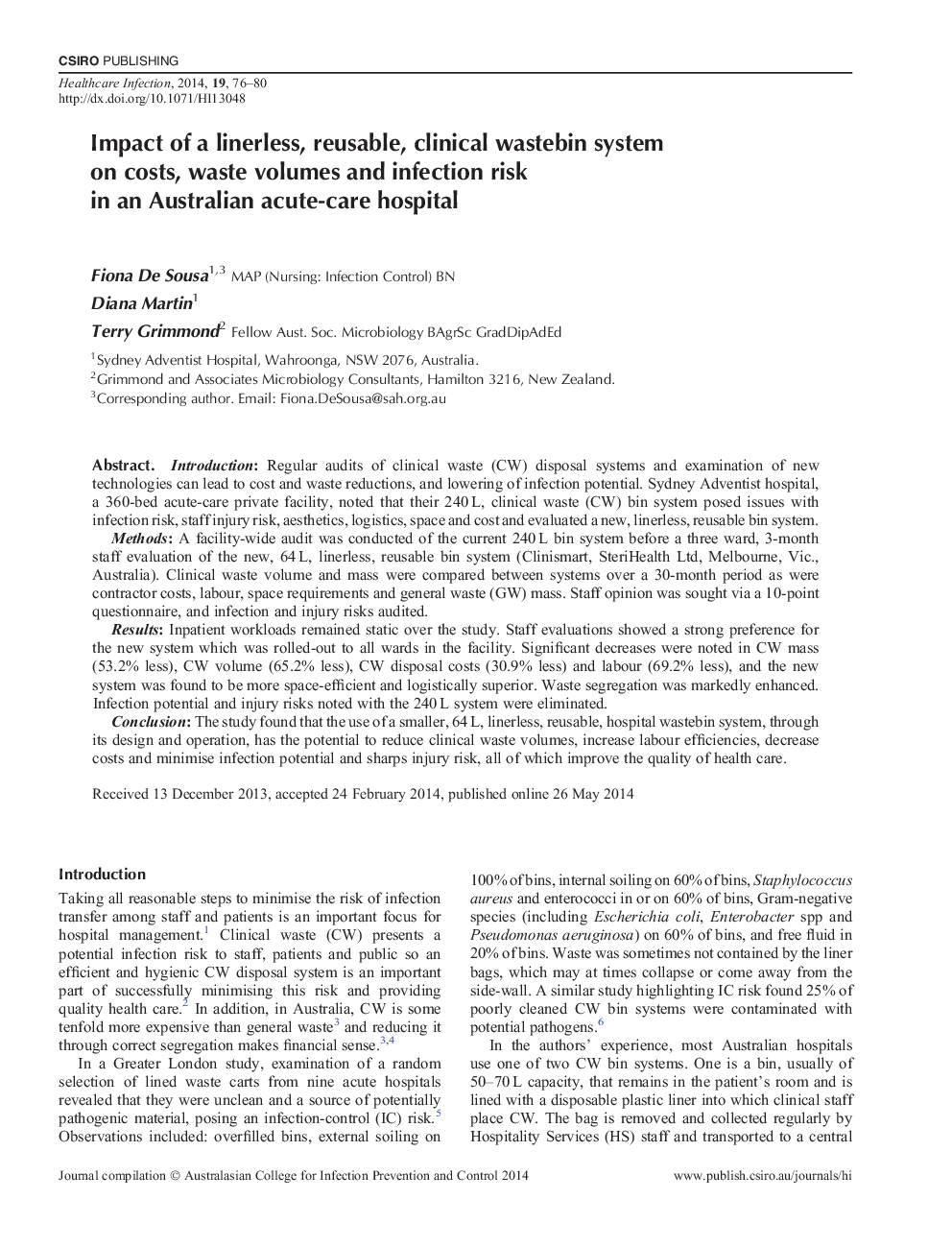| Article ID | Journal | Published Year | Pages | File Type |
|---|---|---|---|---|
| 2685349 | Healthcare infection | 2014 | 5 Pages |
IntroductionRegular audits of clinical waste (CW) disposal systems and examination of new technologies can lead to cost and waste reductions, and lowering of infection potential. Sydney Adventist hospital, a 360-bed acute-care private facility, noted that their 240 L, clinical waste (CW) bin system posed issues with infection risk, staff injury risk, aesthetics, logistics, space and cost and evaluated a new, linerless, reusable bin system.MethodsA facility-wide audit was conducted of the current 240 L bin system before a three ward, 3-month staff evaluation of the new, 64 L, linerless, reusable bin system (Clinismart, SteriHealth Ltd, Melbourne, Vic., Australia). Clinical waste volume and mass were compared between systems over a 30-month period as were contractor costs, labour, space requirements and general waste (GW) mass. Staff opinion was sought via a 10-point questionnaire, and infection and injury risks audited.ResultsInpatient workloads remained static over the study. Staff evaluations showed a strong preference for the new system which was rolled-out to all wards in the facility. Significant decreases were noted in CW mass (53.2% less), CW volume (65.2% less), CW disposal costs (30.9% less) and labour (69.2% less), and the new system was found to be more space-efficient and logistically superior. Waste segregation was markedly enhanced. Infection potential and injury risks noted with the 240 L system were eliminated.ConclusionThe study found that the use of a smaller, 64 L, linerless, reusable, hospital wastebin system, through its design and operation, has the potential to reduce clinical waste volumes, increase labour efficiencies, decrease costs and minimise infection potential and sharps injury risk, all of which improve the quality of health care.
